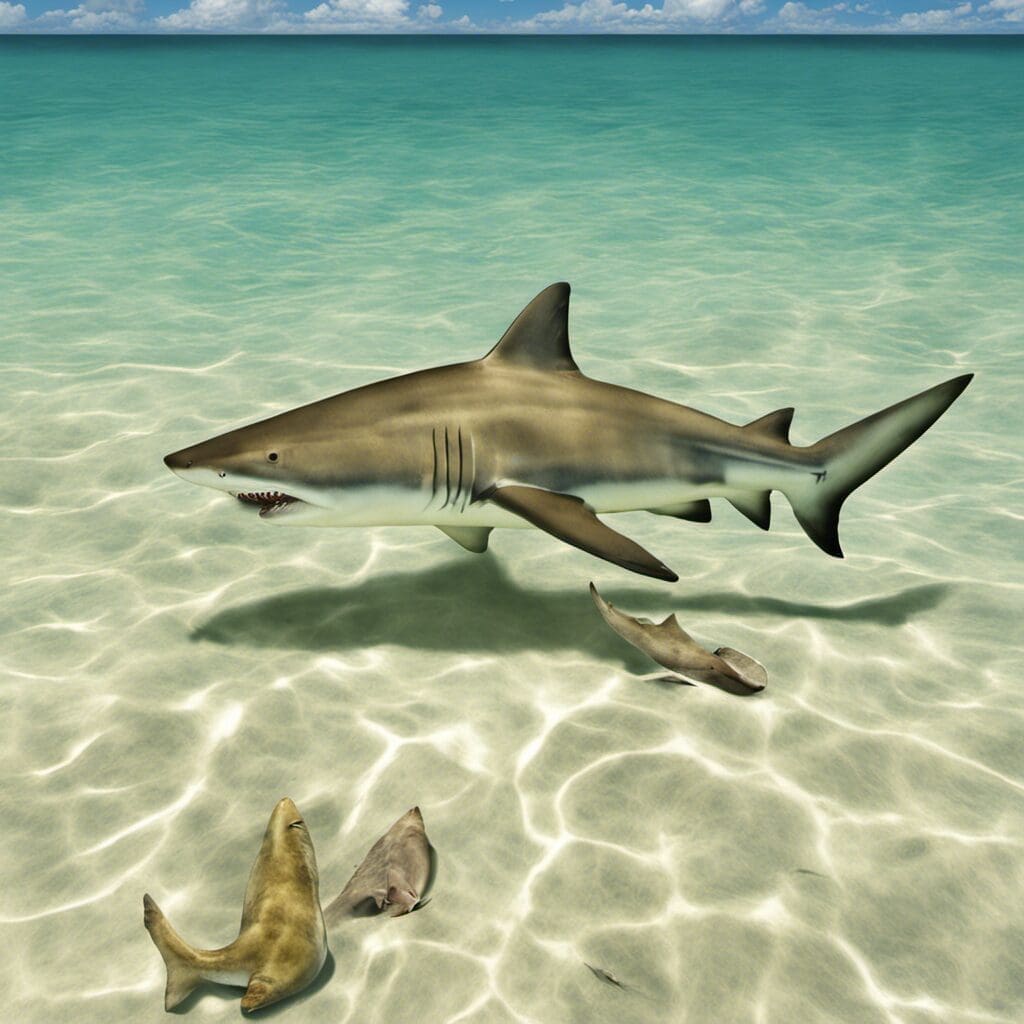Introduction
The Lemon Shark, scientifically known as Negaprion brevirostris, is a member of the Carcharhinidae family, also known as the Requiem Sharks.
Conservation Status
Categorized as a Near Threatened species on the IUCN Red List, Lemon Sharks face major threats from commercial and recreational fishing due in part to their slow growth and low reproductive potential. Continued conservation efforts are required to maintain and hopefully increase their populations.
Statistics
| Attribute | Average | Range |
|---|---|---|
| Length | 8-10 feet | 5-12 feet |
| Weight | 200 lbs | 150-400 lbs |
| Lifespan | 27 years | 20-30 years |
Distribution
The Lemon Shark is native to the Atlantic and Pacific coasts of North and South America, with specific concentrations in Florida, Bahamas, Baja California, and the Gulf of Mexico. The species also inhabits waters from Brazil to New Jersey, and as far west as the Hawaiian Islands. No known specific migration patterns have been recorded for this species.
Habitats
Preferring warmer and shallower waters, the Lemon Shark inhabits coastal and inshore waters with a depth range of about 300 feet. These sharks tolerate a wide range of temperatures however, prefer warm tropical waters.
When and Where to See
Lemon Sharks are seen more frequently during the summer and early fall. Prime sighting times are during twilight hours, when these sharks feed.
Best Fishing Locations
Top 10 locations to fish for Lemon Sharks include:
- Florida Keys, Florida
- Bimini, Bahamas
- Key West, Florida
- Monterey Bay, California
- South Padre Island, Texas
- Myrtle Beach, South Carolina
- Long Island, New York
- Cape Cod, Massachusetts
- Gulf of Mexico, Alabama
- Outer Banks, North Carolina
General Tips
To find Lemon Sharks when specific locations aren’t known, look for warm, shallow, coastal waters, preferably near a river mouth which is where they are frequently spotted.
How to Catch
Lemon Sharks can be caught using cut bait that includes mullet, mackerel, or bonito. Properly equipped boats and heavy tackle are needed for shark fishing. Spring and summer are the prime fishing seasons for this species when they move closer to the shore. Different techniques such as trolling and bottom fishing are used, however it is encouraged to practice catch and release to preserve their populations.
Identification Guide
Lemon Sharks are quite large, sand-colored with a flat, broad snout. The pronounced dorsal and pectoral fins, paired with its robust build, make the Lemon Shark easy to identify underwater.
Culinary Use
The meat of a Lemon Shark is often used in fish and chips and can be grilled, baked, or fried. Its taste is mild and meaty, similar to swordfish. Recipes found typically include spices and citrus to complement the flavor. Always ensure the shark is properly cleaned before cooking.
Additional Information
The Lemon Shark feeds mainly on fish, stingrays, and crustaceans. They have a fascinating social structure and show strong site fidelity. They are subjected to predation from larger shark species. Lemon Sharks are widely recognized in Florida’s Shark Valley where ongoing research into their behavior and life cycle continues.
References and Further Reading
For more information on Lemon Sharks, recommended readings include “Sharks of the World” by Leonard Compagno and “The Shark Handbook” by Greg Skomal. Additional sources include National Geographic and the Florida Museum of Natural History. Please note that all these resources should be used responsibly with an aim to better understand and conserve this near threatened species

